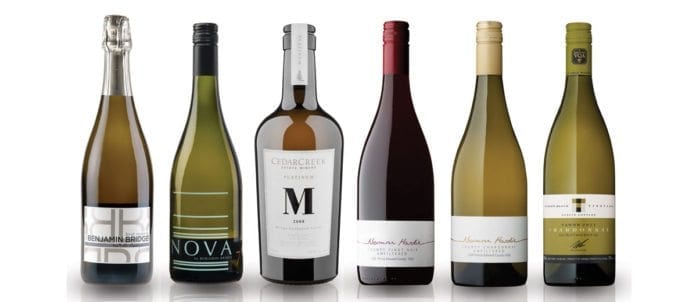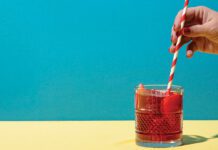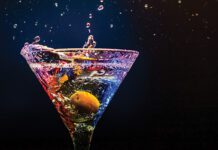Canadian wine has come a long way. The statistics speak for themselves: the burgeoning sector now accounts for sales of more than 220-million bottles per year, according to the Ottawa-based Canadian Vintners Association. With booming wine tourism, and Canadian wines representing approximately 30 per cent of national consumption, it’s easier than ever to entice restaurant customers to choose local vino.
Growth is continuing across the country. Nova Scotia recently caught the attention of the wine press, which raved about the quality of the province’s Benjamin Bridge Brut Reserve sparkling wine. The $75 retail price alone is enough to raise eyebrows. But there are other, more affordable, Nova Scotia wines that appeal to Heather Rankin, sommelier at Obladee Wine Bar in Halifax. “Nova Scotia has a budding wine industry, and we normally have three Nova Scotia wines by the glass; people respond to local and sustainable, especially younger people,” she says.
It doesn’t hurt that Rankin lives near wine-growing areas: “We love to visit local wineries and most are only an hour away. The staff loves the visits where they’ll get a tasting, a vineyard tour and a chance to meet the winemakers,” she says.
However, the Nova Scotia sommelier knows the limitations of wine in her home province. “It’s a very cool climate, and many of the wines are made from [hardier] hybrid grapes. The signature style is aromatic whites. Reds are less successful as they tend to be lean and herbaceous,” she says.
Sourcing Canadian product from outside Nova Scotia can also be difficult — as it can be in other provinces — due to interprovincial trade barriers. But a recent success at Obladee has been Niagara’s Tawse Chardonnay at $11 per glass. “It’s doing really well. People like that that winery is moving towards biodynamic and organic and also feel good knowing Tawse won the Canadian Winery of the Year award from the online wine community Wine Align several times,” says Rankin. Having staff on board with the Tawse “story” — and the quality of the wine — also helps spur sales.
Anthony Demas, director of Beverage Management at Toronto’s Oliver & Bonacini (O&B) restaurant group, understands the importance of staff engagement. He takes employees to Cave Spring in Niagara, Ont., for a tour, tasting, lunch and education session with the winemakers. “They love it,” says Demas. “They get to meet the people behind the wines.” Recently, Demas began taking 12 staff members on a weekend camping trip to Norman Hardie’s winery in Prince Edward County, Ont.
Rosehall Run is also a noted winery promoted by O&B. It supplies 20-litre wine kegs to the restaurant group’s high-end Biff’s Bistro in Toronto. And, since the sealed containers are filled with carbon dioxide gas, rather than wine-destroying oxygen, wine lasts longer than it would in an opened bottle. “The last glass tastes like the first,” says Demas, adding that the savings on packaging and shipping mean he gets a litre of wine for the price of a 750-ml bottle.
At The Chase in Toronto, Heather McDougall keeps the wine list moving by offering product from smaller producers. “Nobody walks in and says ‘Let’s buy local,’” says the sommelier, “but if it’s suggested, people are open to trying.” She continues: “Pretty much everything we’ve brought in from Niagara has been a success.” She points out that Beamsville, Ont.’s Malivoire’s Pinot Noir ($20 per glass), which has been on the list for more than three months, is selling well.
Originally from Calgary, McDougall has learned a lot about Ontario wines in the year and a half she’s been living in the province. Overall, she’s impressed by the region’s Chardonnay and Syrah. But, her local leanings could go further, as she’s considering creating a Chase house wine with a Niagara producer, as O&B and others have done.
The Vancouver-based Earls has one such “own-label” wine success story. The chain has had “own-label” wines from France, Italy and California for years. “We attempted a house wine from the Okanagan in 2003. The white was OK, but we didn’t do well with the red,” confesses George Piper, director of Wine Experience for the 60+ Earls restaurants. “We couldn’t get the quality and quantity, so we dropped it. In 2011 we tried again with CedarCreek winery, and they delivered. B.C. customers are now very loyal to the Okanagan.”
When it comes to label offerings, Piper considers vintage variation at Earls, especially with reds. “We focus on blends. It’s much easier for a winemaker to be consistent with a blend. We are very pleased with how CedarCreek has succeeded in delivering that consistency each year.” Both the white and red Rascal Next Door sell for an affordable $7.75 a glass or $29 a bottle.
In the nation’s capital, Pieter Van den Weghe, GM and wine director at Beckta, has solid Canadian representation. “Riesling is still good and Chardonnay from Niagara is very strong. We’ve also had success with some delicious and well-priced Pinots from Flat Rock and Cave Springs,” which listed in the mid-$40s. “There’s still a feeling that B.C. is better for bigger, rounder reds,” he says, mentioning West Kelowna’s Quails’ Gate. Van den Weghe is enthusiastic about sparkling wines from Niagara but finds customers hesitant — although they can be convinced with the right wine: “We’ve had a tremendous response to Cave Spring Dolomite sparkling by the glass. People are pleasantly surprised.” Van den Weghe charges $7 for 3 oz. or $11 for 5 oz. of the Niagara-area wine.
Of course there’s always more to learn, so it helps that the British Columbia Wine Institute is supporting Canadian Wines through staff training. “Last year we rolled out our B.C. Wine Ambassador program to 505 restaurants and liquor stores,” explains Lindsay Kelm, communications manager. “We felt that many of the world guidebooks devote very little space to Canada, so we developed the B.C. Wine Ambassador program. Rhys Pender, MW, [Master of Wine, the highest accreditation of the London, U.K.-based Wine and Spirits Education Trust] developed the course. We offer programs on specific dates, and it’s a two-and-a-half hour session that includes a seminar and tasting.” The program got its start two years ago with funding from the B.C. government’s “Buy Local” program.
Last year more than 500 people took the half-day course at 23 different locations. In addition to the sessions organized by the Wine Institute, several major restaurant chains in the Lower Mainland brought the Wine Institute in to offer the course to their staff. “We’re very open to individual restaurants contacting us for wine-training assistance,” says Kelm.
Meanwhile, the wine community is also doing its part to market Ontario wines. The Wine Council of Ontario recently launched a ‘Restaurant Recognition’ page on its website, providing a list of restaurants featuring VQA wines. “Restaurant Recognition originally started as an award we would give out, but now restaurants can nominate themselves,” explains Magdalena Kaiser-Smit, director of Public Relations, Marketing & Tourism for the Council. “And we send out a plaque acknowledging a restaurant’s wine list. We’re at close to 200 now.”
Each fall, the LCBO launches a big promotion of Ontario wines that includes a restaurant component. Last year’s ‘Shine ON’ encouraged 130 operators to sign up and offer an Ontario wine pairing at their restaurant. “It’s a great opportunity to benefit from our advertising and social-media promotion, and there’s no cost to the restaurants,” says Heather McGregor of the LCBO.
Meanwhile, ‘Feast ON’ is a new initiative launched this year by the Ontario Culinary Tourism Alliance. Restaurateurs that locally source 25-per-cent of food, wine and beer qualify for the initiative that drives consumers to paying members through a variety of media efforts, including an interactive website.
With quality and customer interest rising, and easy access to training and promotional assistance, there’s never been a better time to list Canadian wine. l




















